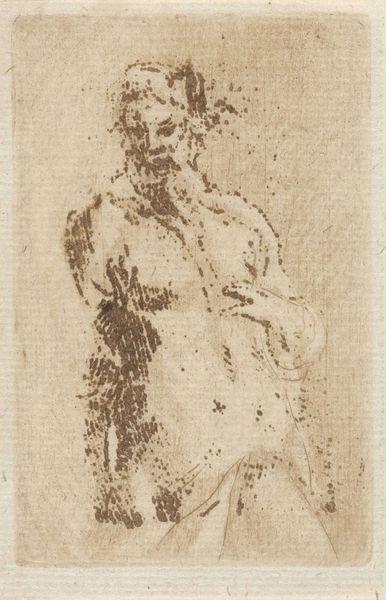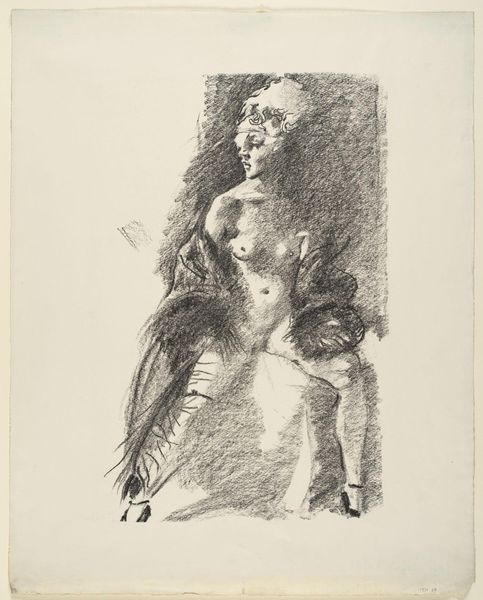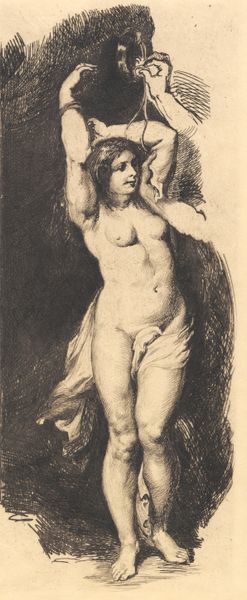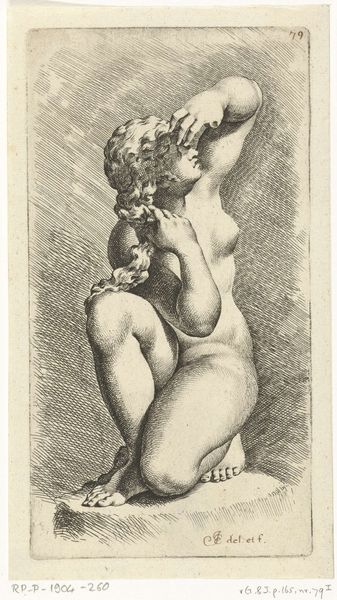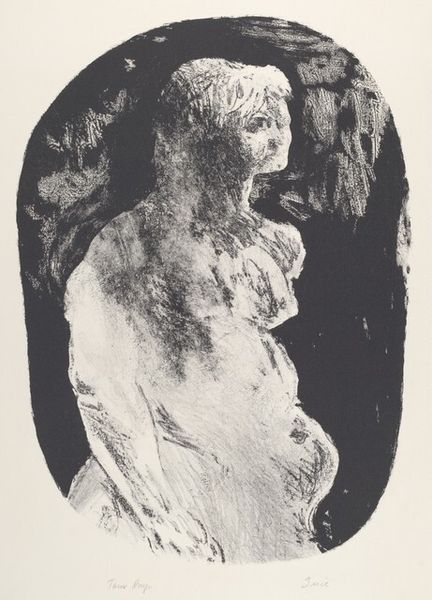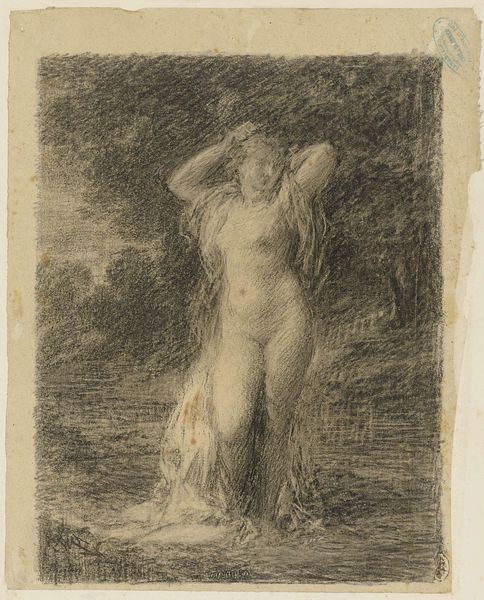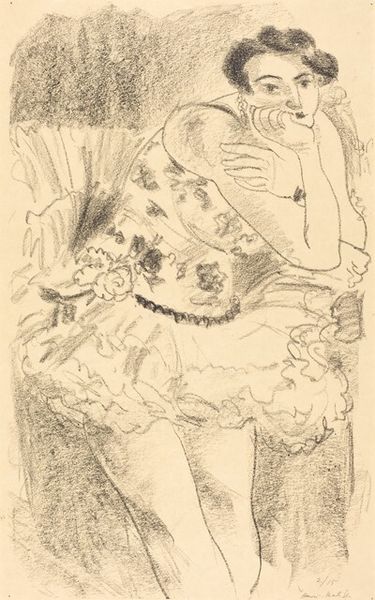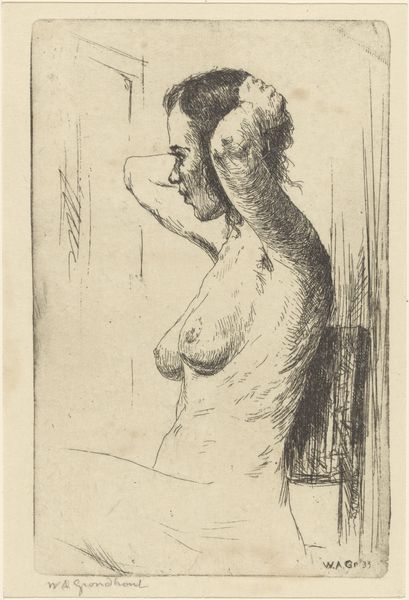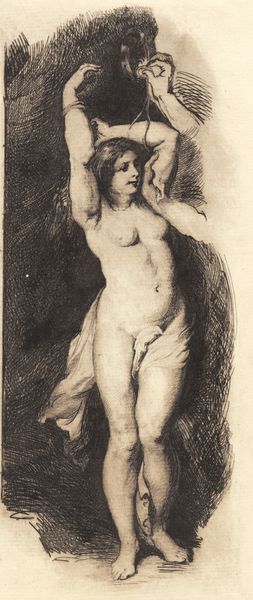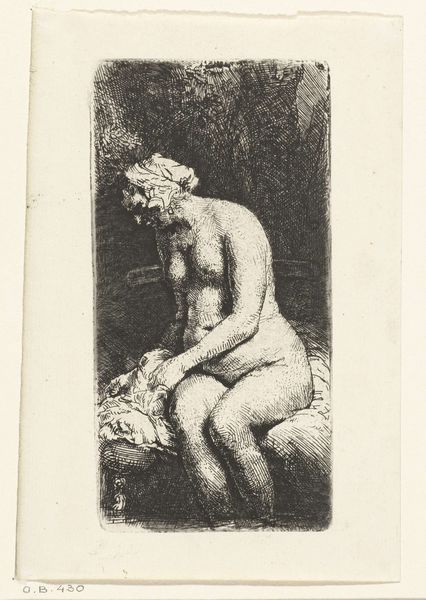
Dimensions: height 90 mm, width 58 mm
Copyright: Rijks Museum: Open Domain
This etching, "Torso van naakte man," was created by Caspar Jacobsz. Philips in the 18th century. The printmaking process would have begun with a metal plate, likely copper or zinc. The artist would then have coated the plate with a waxy, acid-resistant ground. Using a needle, the artist scratched away the ground, exposing the metal. The plate was then immersed in acid, which bit into the exposed lines, creating grooves. Ink was then applied to the plate, filling the etched lines. Finally, the surface was wiped clean, and the image transferred to paper under high pressure. The resulting print has a direct, tactile quality. The etched lines, with their varying depths and thicknesses, define the form of the male torso. The figure emerges from the shadows, created by the density of the etched lines. The process gives the image its rough and unfinished appearance, but also its immediacy. Understanding the making of this print allows us to move beyond the mere representation of the nude form and consider the labor and skill involved in its creation. The print becomes a testament to the artist's hand, and challenges our assumptions about the relationship between artistic intention and material execution.
Comments
No comments
Be the first to comment and join the conversation on the ultimate creative platform.
